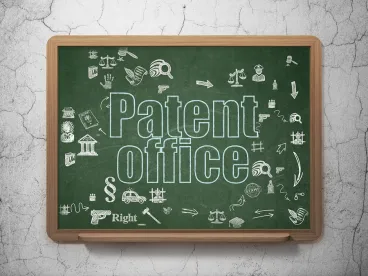All the effective dates of the America Invents Act (“AIA”) have come and gone. The patent reform initiated by the AIA has now been a reality for 10 years. And many provisions of the AIA have now received administrative and judicial interpretations.
The changes involving the Patent Office’s Administrative Patent Judges (“APJs”) stand out as some of the most significant adjustments brought about by the AIA.
First, the Board of Patent Appeals and Interferences (“BPAI”) was replaced by the Patent Trial and Appeal Board (“PTAB”), and the number of APJs increased greatly. The significant increase in the number of APJs was largely to accommodate the changes in post-grant proceedings from inter partes reexaminations and ex parte reexaminations, which went to the examining corps before being heard by the BPAI, to inter partes reviews (IPRs), post-grant reviews (PGRs), and the now sunset covered business method post-grant reviews (CBM PGRs), which are heard initially by a panel of at least three APJs at the PTAB.[1] While petitions for IPRs may raise anticipation and obviousness grounds (§ 102 and § 103) based on patents and printed publications (similar to ex parte reexaminations), petitions for PGRs may challenge patents within nine months of issuance on a broad range of issues, not just prior art, including substantive challenges under AIA’s 35 U.S.C. §§ 101 and 112.
Ten years in, IPR filings have levelled off around an average of 1500 petitions per year (based on data from 2017-2021). This number is notable, as it is nearly half of the average number of district court infringement litigations filed per year over the last 5 years (approximately 3800). PTAB IPR institution rates are lower now than they were initially (60% through Q3 FY21 compared to a high of 75% in FY2014). This may represent a cooling off after a rush of challenges to the low-hanging fruit of “bad patents” that were a supposed motivation for the AIA’s IPR and PGR provisions. Or it may simply reflect a rise in discretionary denials. If an IPR is instituted, however, the claim cancellation rate has remained high since the beginning: as of Feb. 1, 2015, 71% of instituted claims were cancelled by PTAB, in May 2017 the rate was 74%, and as of July 31, 2021, the rate is 71%.[2] For PGRs, the rate is even higher: 82% of instituted claims are cancelled by PTAB as of July 31, 2021.[3]
Second, while the AIA largely eliminated pre-AIA 35 U.S.C. 102(g) issues, an exception applies to some “transition applications,” which are colorfully referred to by your Humble Editor as “Jedi-Master-Mixers.” AIA transition provision § 3(n)(2), which is found in the AIA statute passed by Congress and signed by President Obama but is not codified in Title 35 of the United States Code, reads as follows:
(n) EFFECTIVE DATE. —
(2) INTERFERING PATENTS.—The provisions of sections 102(g), 135, and 291 of title 35, United States Code, as in effect on the day before the effective date set forth in paragraph (1) of this subsection [March 15, 2013], shall apply to each claim of an application for patent, and any patent issued thereon, for which the amendments made by this section also apply, if such application or patent contains or contained at any time—
(A) a claim to an invention having an effective filing date as defined in section 100(i) of title 35, United States Code, that occurs before the effective date set forth in paragraph (1) of this subsection [March 15, 2013]; or
(B) a specific reference under section 120, 121, or 365(c) of title 35, United States Code, to any patent or application that contains or contained at any time such a claim.
(Emphasis added.)
Hence, certain issues that could arise under pre-AIA § 102(g) have carried through into our current AIA practice. In addition, while the AIA eliminated interference practice, it also created derivation proceedings (codified in 35 U.S.C. § 135), which are heard directly by the APJs at the PTAB.
The Federal Circuit and the Supreme Court have weighed in on several aspects of AIA post-grant proceedings, including the one-year time bar to IPR petitions set forth in 35 U.S.C. § 315(b) and the non-appealability of PTAB institution decisions under 35 U.S.C. § 314(d). In some cases, PTAB’s interpretation of certain AIA provisions was rejected, such as when the Supreme Court determined that the PTAB lacks discretion to institute on fewer than all grounds of an IPR petition. In other cases, it was a district court’s interpretation that got rejected, as when the Federal Circuit weighed in on petitioner estoppel.
Some initial practices of the PTAB that were set forth in the Trial Practice Guide have changed through the issuance of memos and further guidance. For example, since November 2018, the PTAB has applied the Phillips claim construction standard to mirror the standard applied by the district courts. Similarly, since January 2021, the PTAB has applied the Nautilus st54andard for assessing claim definiteness to mirror the standard applied by the district courts. The PTAB has also responded to criticism about the limited opportunities for patent owners to amend their challenged claims by instituting a Motion to Amend Pilot Program, which the PTO recently extended until September 16, 2022.
Despite these developments, many aspects of the AIA remain in flux, as courts continue to flesh out the details of the law. Some issues to watch include:
-
the Supreme Court’s decision in US v. Arthrex regarding the constitutionality of PTAB judges’ appointments, and the developing Director review procedure;
-
discretionary denials of institution in IPR and PGR proceedings, especially with respect to parallel proceedings;
-
the role of precedential decisions, the Precedential Opinion Panel (“POP”), and the USPTO’s role in rulemaking; and
-
continuing issues with petitioner estoppel.
We will likely see clarification on these and many other aspects of the AIA in the next few years.
Notwithstanding the Supreme Court’s decision in US v. Arthrex and the many contours of AIA post-grant proceedings that are still taking shape, IPRs and PGRs are now an established part of the post-grant landscape that every patent owner and every possible infringing third party needs to consider.
Ten years in, there are many issues still to be ironed out in the next 10 years.
[1] Ex parte reexaminations remained unchanged, but the AIA added supplemental examination as a new pathway to ex parte reexamination, offering patent owners a possible means of purging potential inequitable conduct discovered after issuance (but before litigation)





 />i
/>i

